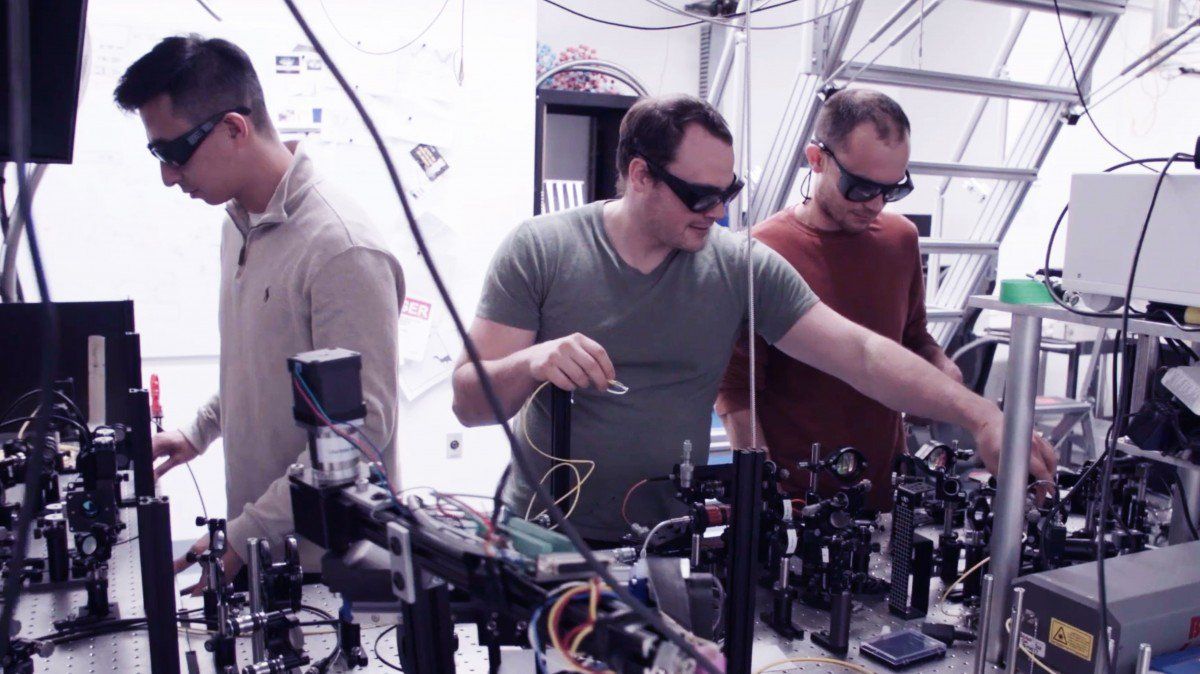Archive for the ‘cybercrime/malcode’ category: Page 180
Nov 26, 2018
Why Online Security is the Fastest Growing and Most Profitable Niche Right Now
Posted by Chris Browning in category: cybercrime/malcode
If you’re paranoid about your cyber security, you may not be so crazy after all.
The cybersecurity industry is experiencing a growth that is almost unparalleled across any other industry even taking into account historical figures. Some people say that the growth in the need of cybersecurity is going to create the biggest wealth transfer we have seen in our lifetime.
With every aspect of our life being fine-tuned with the use of data, making sure that data is secure is becoming a top priority around the globe. This is being reflected in the massive growth of the cybersecurity industry and the massive demand for individuals who have been trained to keep data safe.
The Growth of Cybersecurity
Cybersecurity is the fastest growing technology sector out there. And with cybercrime at an all-time high, the cybersecurity niche is set for massive growth over the next 5 years.
Continue reading “Why Online Security is the Fastest Growing and Most Profitable Niche Right Now” »
Nov 25, 2018
Russian Hackers Have New Techniques to Steal Data
Posted by Victoria Generao in category: cybercrime/malcode
I’m in a popular new Netflix series called A User’s Guide to Cheating Death hosted by Timothy Caulfield. In “Season 2, Episode 5, Body Hacking”, my transhumanism work appears throughout the film but my longer interview feature section is near the end of the hour show. Lots of other transhumanists and biohackers in it too: Give it a watch! https://www.netflix.com/title/81015026
Nov 7, 2018
This is how artificial intelligence will become weaponized in future cyberattacks
Posted by Genevieve Klien in categories: cybercrime/malcode, robotics/AI
Real-time, autonomous decisions are only some of the techniques AI can bring to the table.
Nov 1, 2018
Cyberattacks increasingly targeting enterprise IT networks in energy and utilities industry
Posted by Genevieve Klien in categories: cybercrime/malcode, energy
Increased attacks prove the importance of detecting threat behaviors early and monitoring network traffic, stopping cybercriminals in their tracks.
Oct 30, 2018
Apple Releases iOS 12.1 With eSIM Support, Real-Time Depth Control, Group FaceTime, New Emoji and More
Posted by Mary Jain in categories: cybercrime/malcode, mobile phones, virtual reality

Group Facetime. I think this means we are closer to platforms that can support Virtual Reality… #Holodeck
Apple today released iOS 12.1, the first major update to the iOS 12 operating system designed for the iPhone and the iPad. iOS 12.1 comes more than a month after the September release of iOS 12 and a few weeks after iOS 12.0.1, a bug fix update.
Oct 25, 2018
The US pushes to build unhackable quantum networks
Posted by Genevieve Klien in categories: cybercrime/malcode, internet, quantum physics
The fiber-optic cables carrying data across the internet are vulnerable to hacking. Two US initiatives aim to fix that by creating super-secure quantum transmissions.
Oct 25, 2018
Elon Musk’s superfast LA underground ‘loop’ is coming sooner than you think
Posted by Genevieve Klien in categories: cybercrime/malcode, Elon Musk
The Boring Company is almost ready to show off its first tunnel under LA, designed to be the ultimate hack for commuters.
- by
-
Eric Mack
Oct 23, 2018
Biohackers Are Implanting Everything From Magnets to Sex Toys
Posted by Derick Lee in categories: bioengineering, biotech/medical, bitcoin, business, cybercrime/malcode, cyborgs, ethics, health, internet, robotics/AI, sex, transhumanism
Biohacking raises a host of ethical issues, particularly about data protection and cybersecurity as virtually every tech gadget risks being hacked or manipulated. And implants can even become cyberweapons, with the potential to send malicious links to others. “You can switch off and put away an infected smartphone, but you can’t do that with an implant,” says Friedemann Ebelt, an activist with Digitalcourage, a German data privacy and internet rights group.
Patrick Kramer sticks a needle into a customer’s hand and injects a microchip the size of a grain of rice under the skin. “You’re now a cyborg,” he says after plastering a Band-Aid on the small wound between Guilherme Geronimo’s thumb and index finger. The 34-year-old Brazilian plans to use the chip, similar to those implanted in millions of cats, dogs, and livestock, to unlock doors and store a digital business card.
Kramer is chief executive officer of Digiwell, a Hamburg startup in what aficionados call body hacking—digital technology inserted into people. Kramer says he’s implanted about 2,000 such chips in the past 18 months, and he has three in his own hands: to open his office door, store medical data, and share his contact information. Digiwell is one of a handful of companies offering similar services, and biohacking advocates estimate there are about 100,000 cyborgs worldwide. “The question isn’t ‘Do you have a microchip?’ ” Kramer says. “It’s more like, ‘How many?’ We’ve entered the mainstream.”
Continue reading “Biohackers Are Implanting Everything From Magnets to Sex Toys” »















